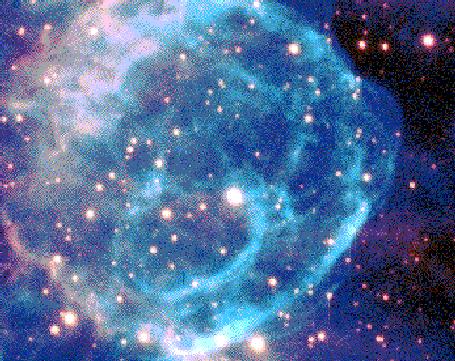Explanation: Wolf-Rayet stars can blow bubbles. These unusual stars are much hotter and more luminous than our Sun. All extremely massive stars will eventually evolve though a Wolf-Rayet phase. Approximately 200 Wolf-Rayet stars are known in our Milky Way Galaxy. Wolf-Rayet stars generate bubbles because they continually eject their outer atmosphere as a stellar wind. This outgoing wind of particles typically carries away more than the mass of our Earth each year! The wind is caused by atmospheric particles absorbing outgoing starlight, although many details of this process are unknown. The Wolf-Rayet is the brightest star in the above picture and is in the center of the large bubble in the nebula known as NGC 2359.
1999 2000 2001 2002 2003 2004 2005 2006 2007 2008 2009 2010 2011 2012 2013 2014 2015 2016 2017 2018 2019 2020 2021 2022 2023 2024 2025 |
Yanvar' Fevral' Mart Aprel' Mai Iyun' Iyul' Avgust Sentyabr' Oktyabr' Noyabr' Dekabr' |
NASA Web Site Statements, Warnings, and Disclaimers
NASA Official: Jay Norris. Specific rights apply.
A service of: LHEA at NASA / GSFC
& Michigan Tech. U.
|
Publikacii s klyuchevymi slovami:
Wolf-Rayet star - zvezdnyi veter - massivnye zvezdy
Publikacii so slovami: Wolf-Rayet star - zvezdnyi veter - massivnye zvezdy | |
Sm. takzhe:
Vse publikacii na tu zhe temu >> | |
